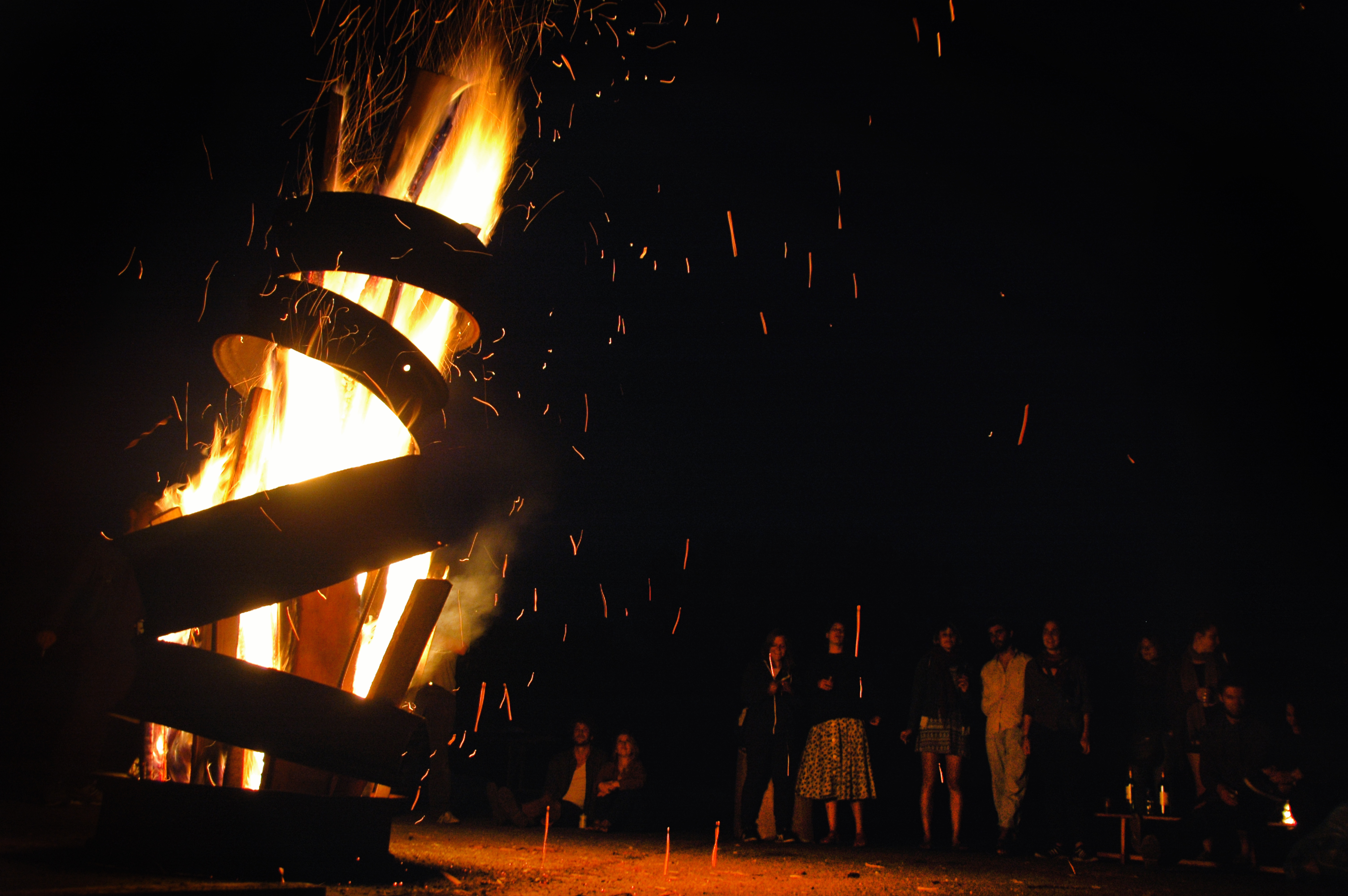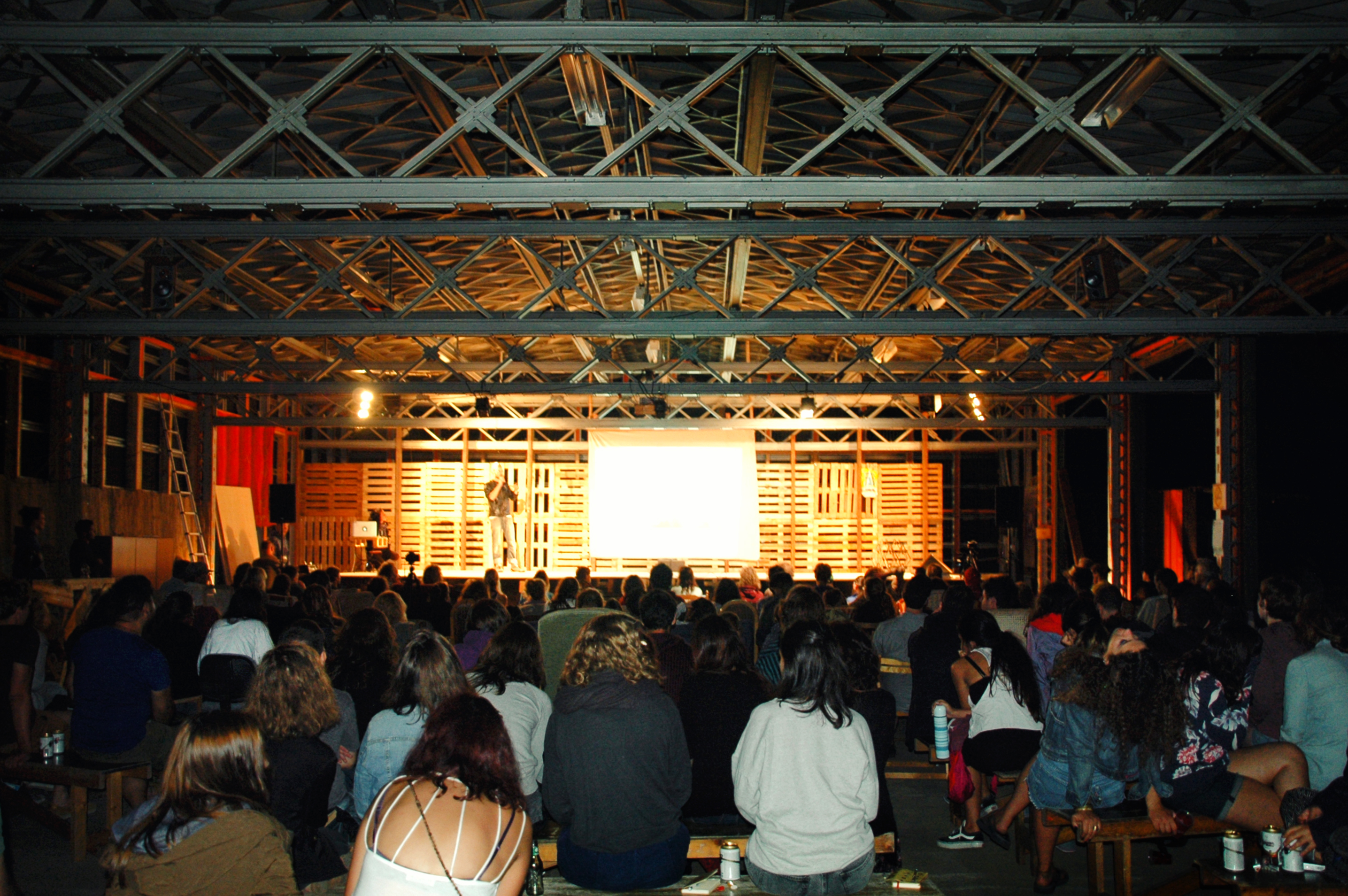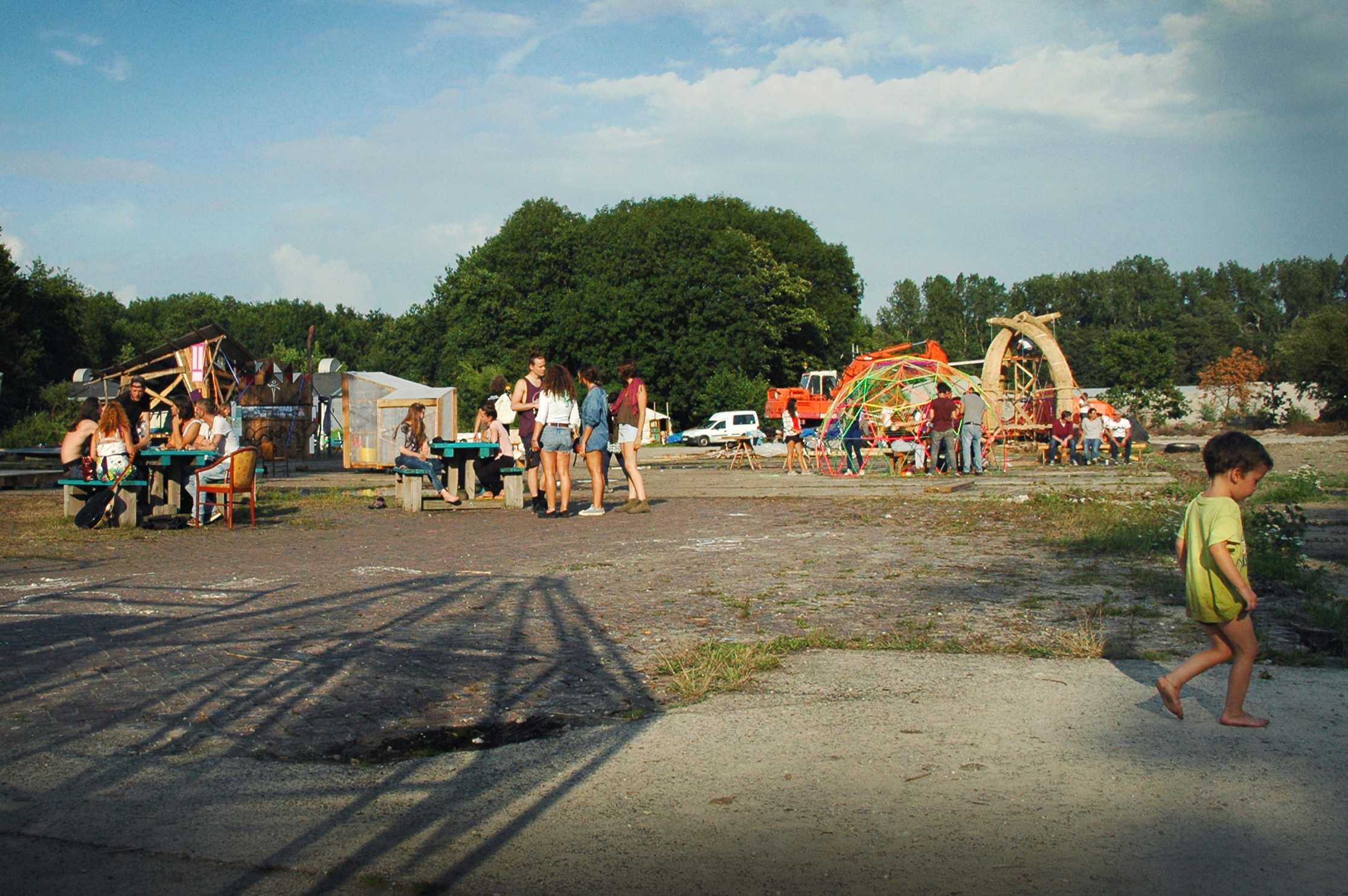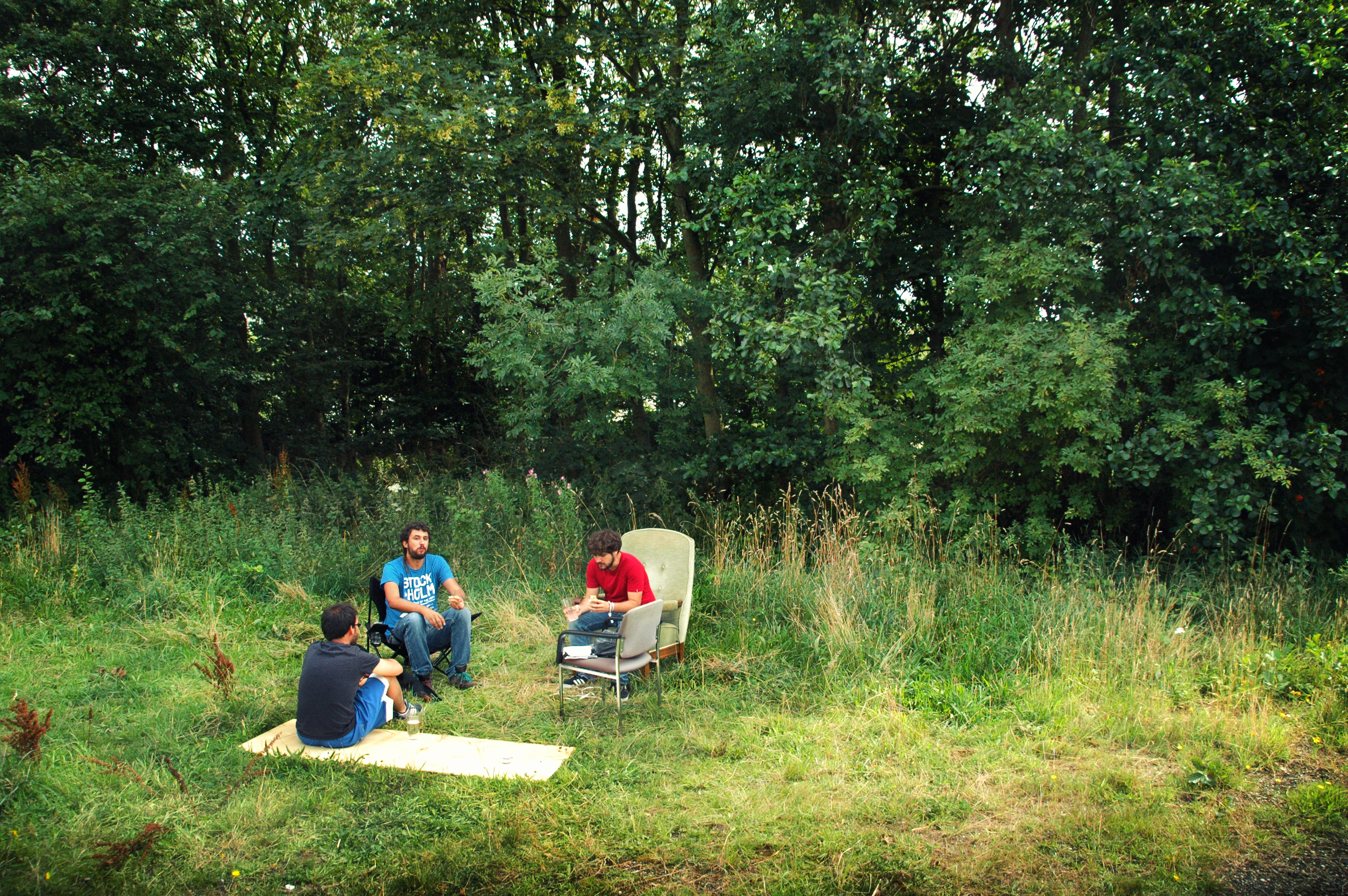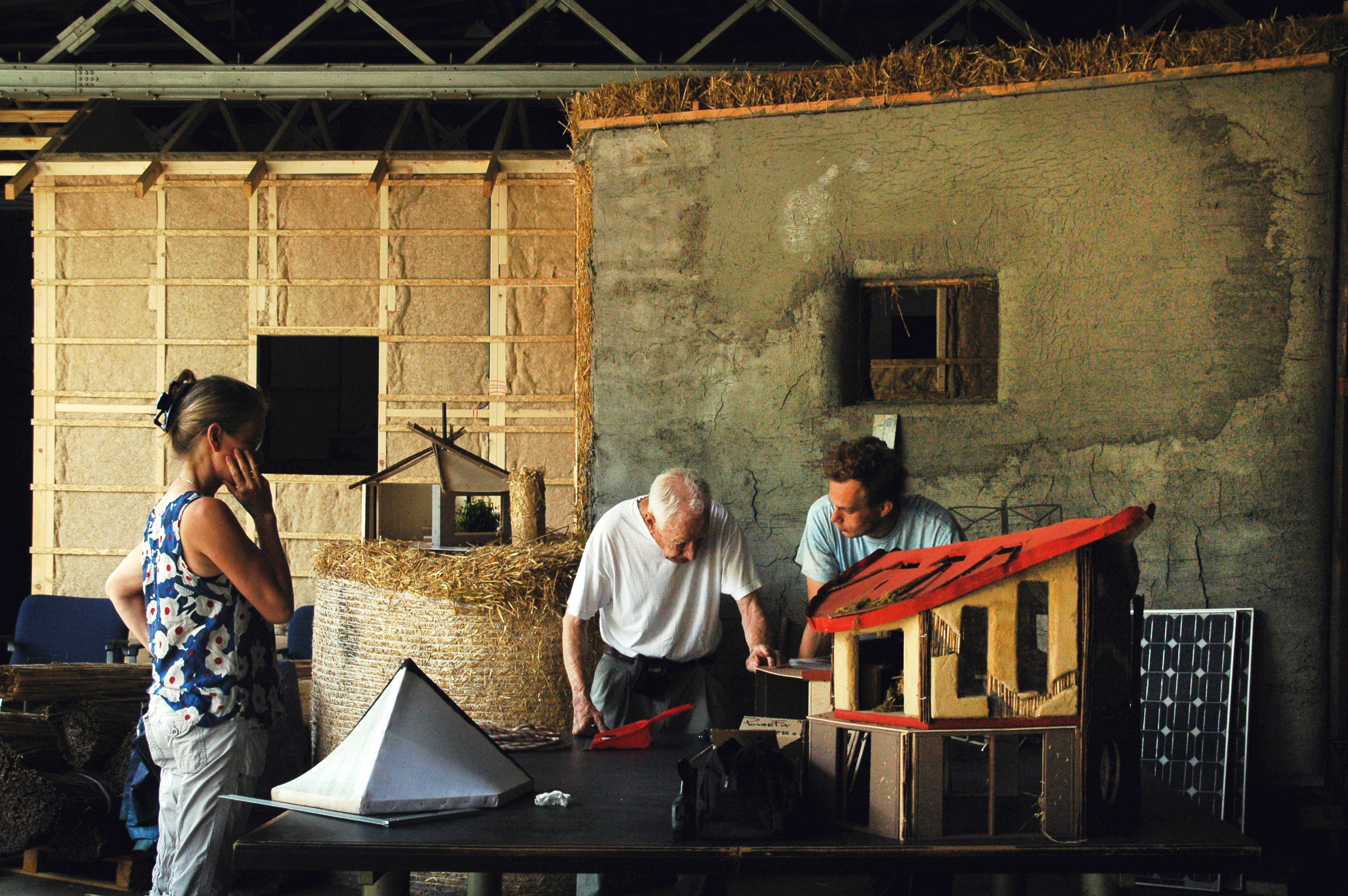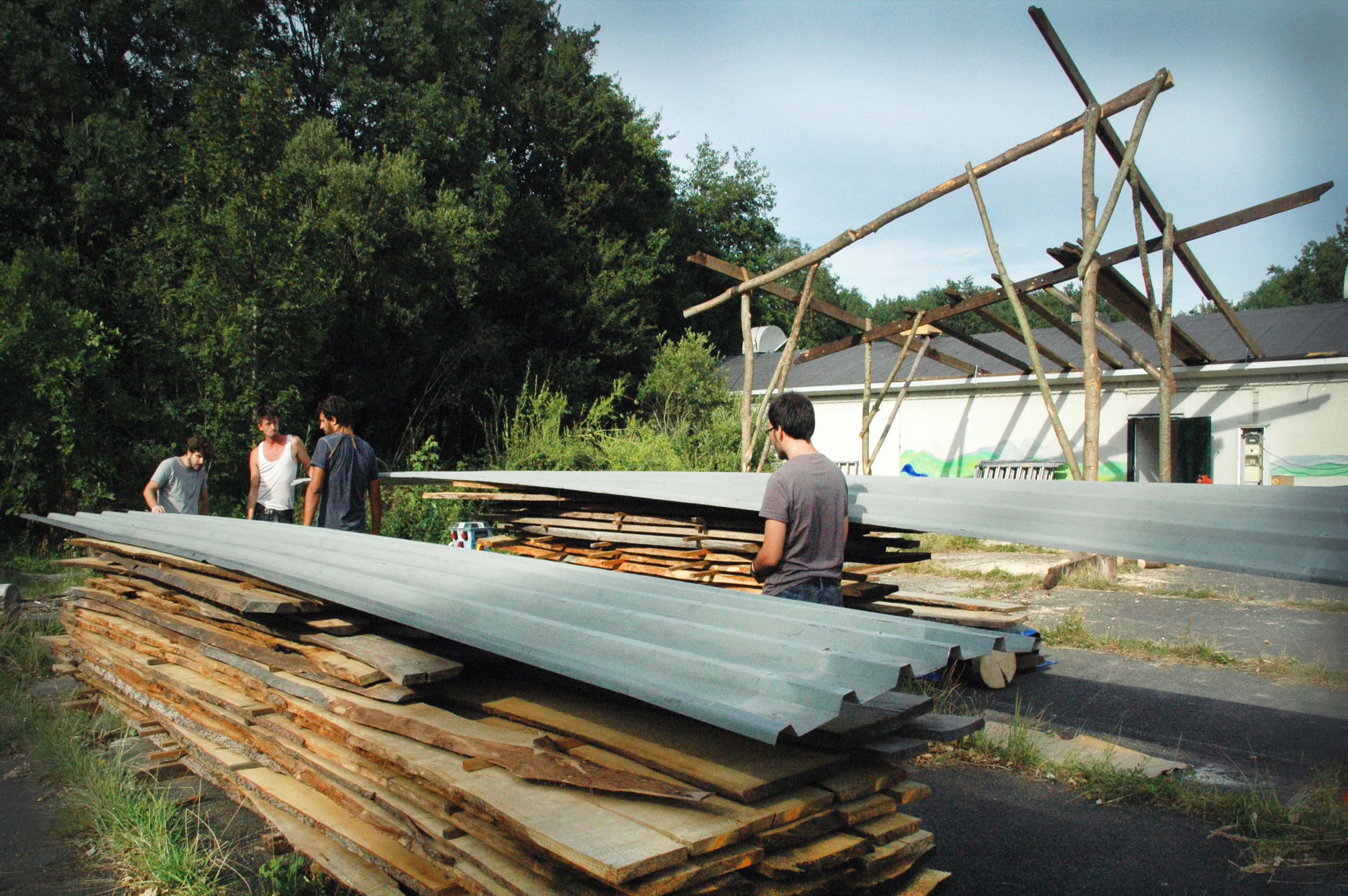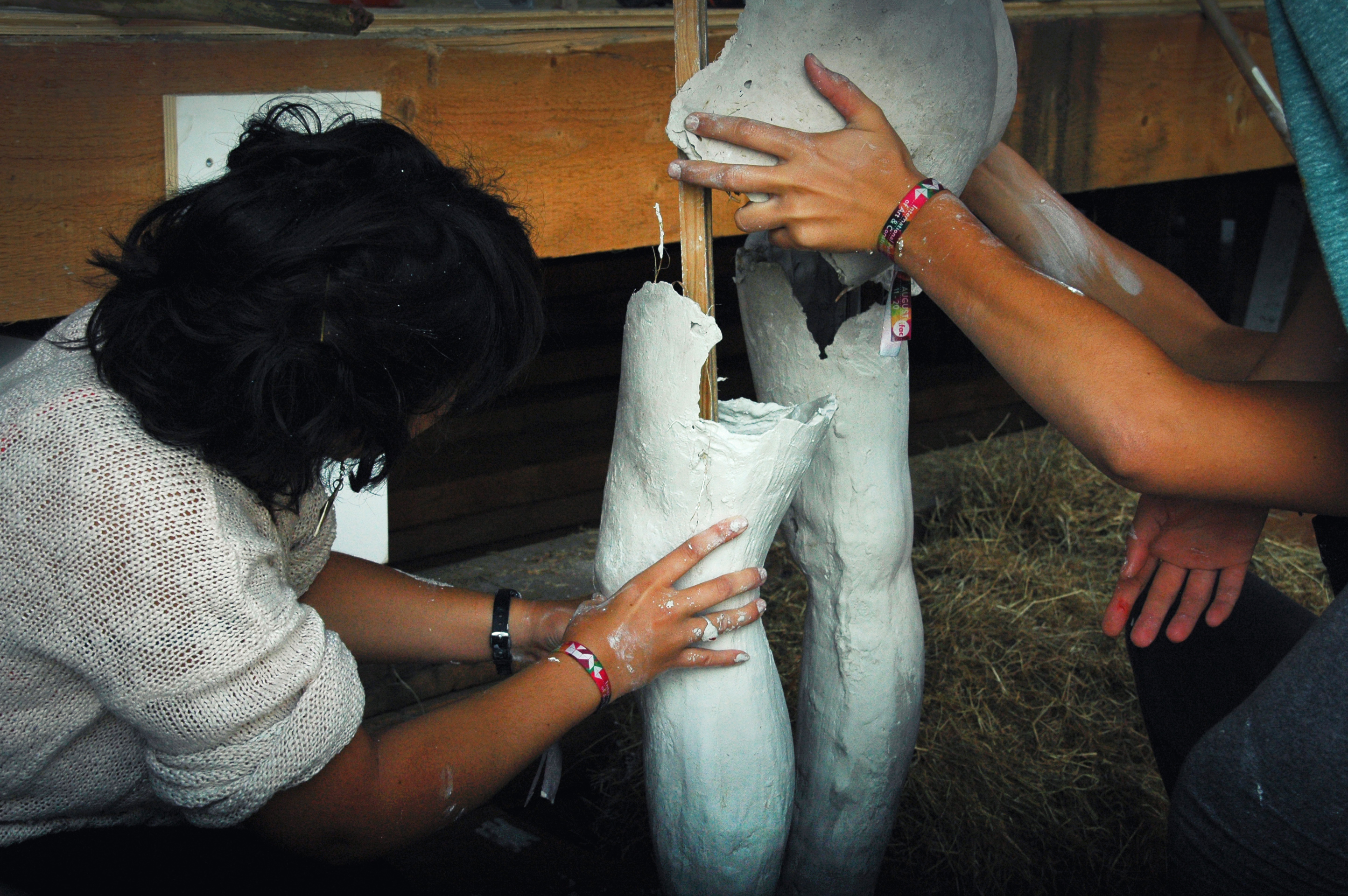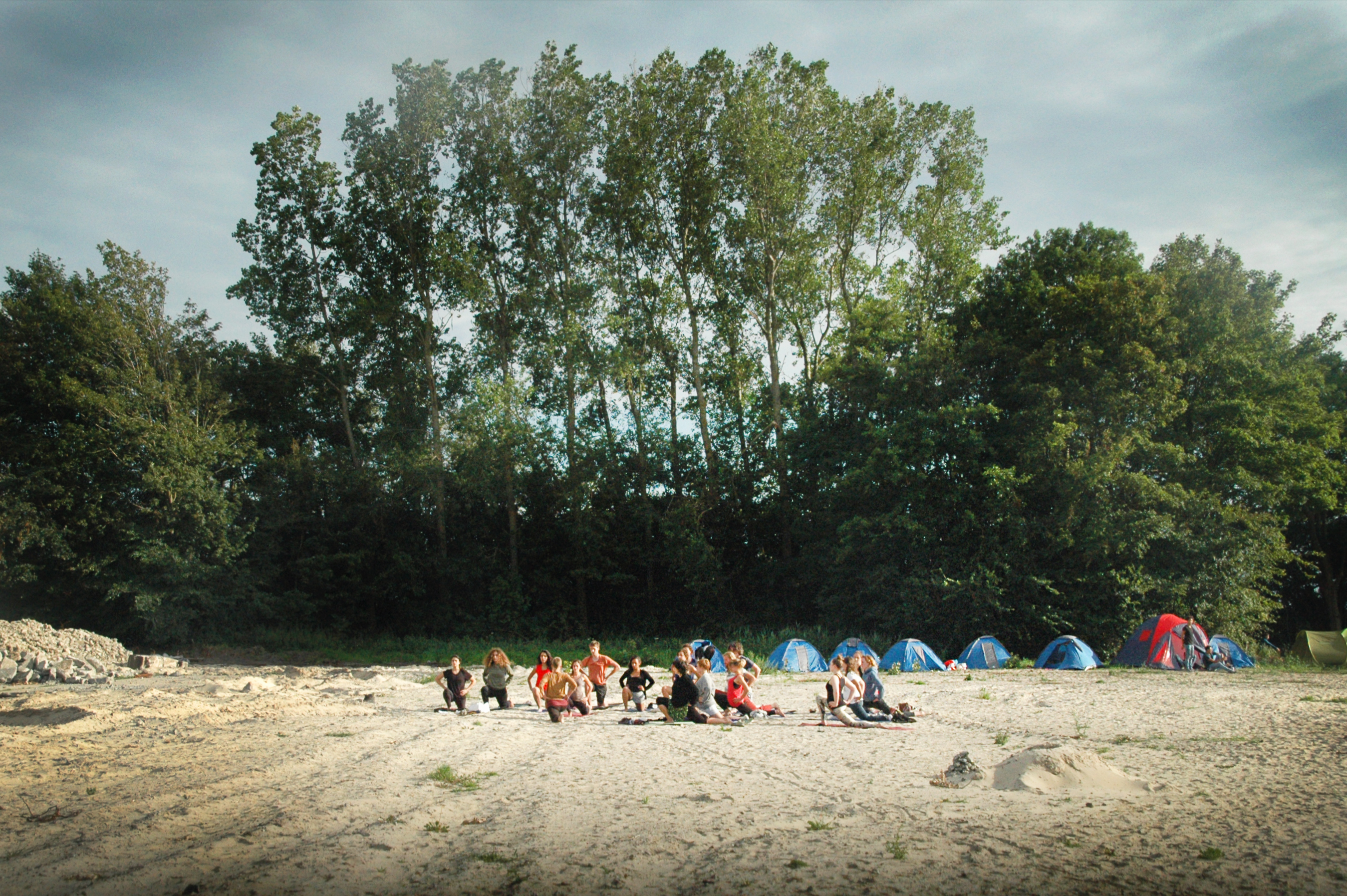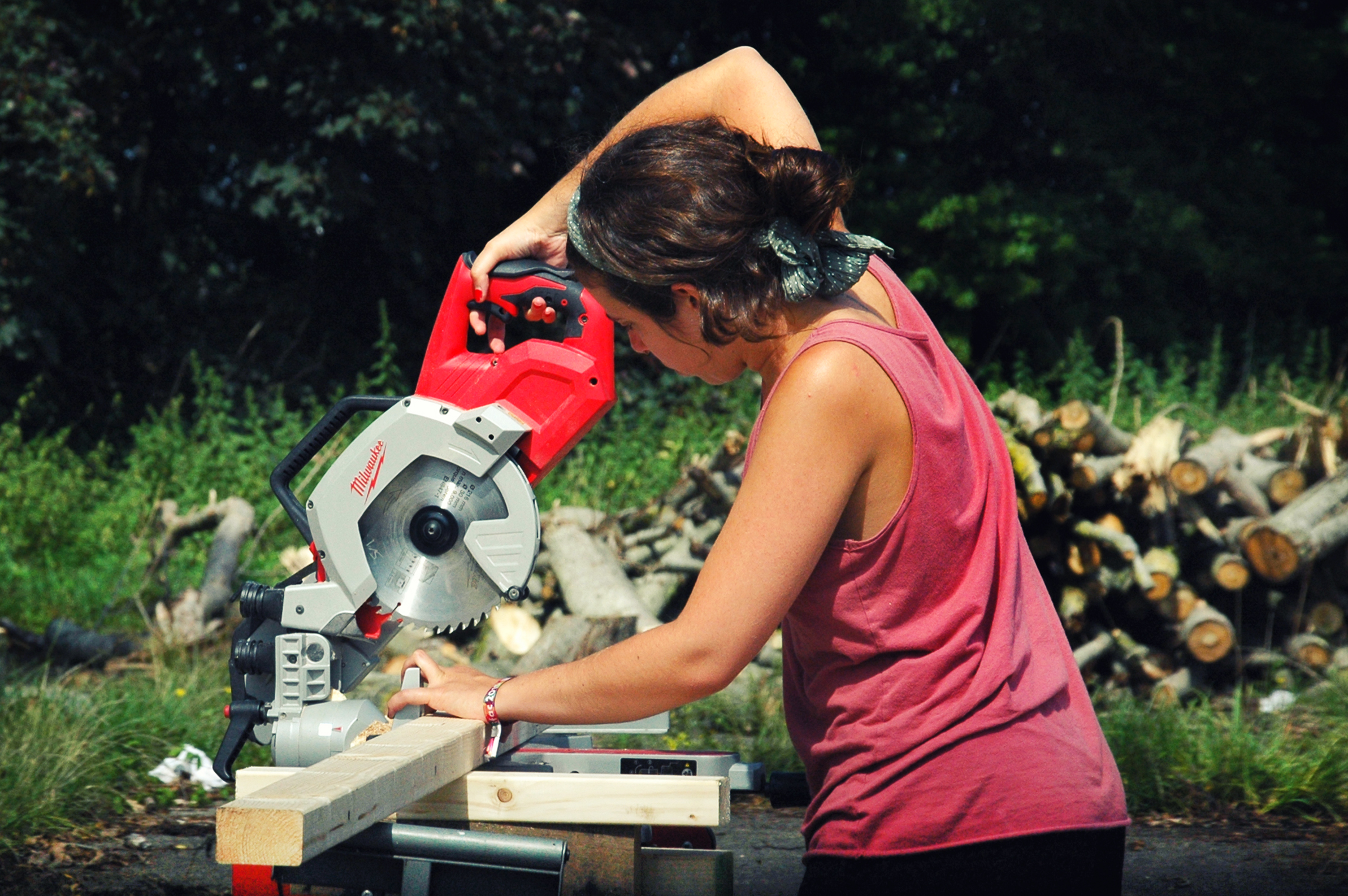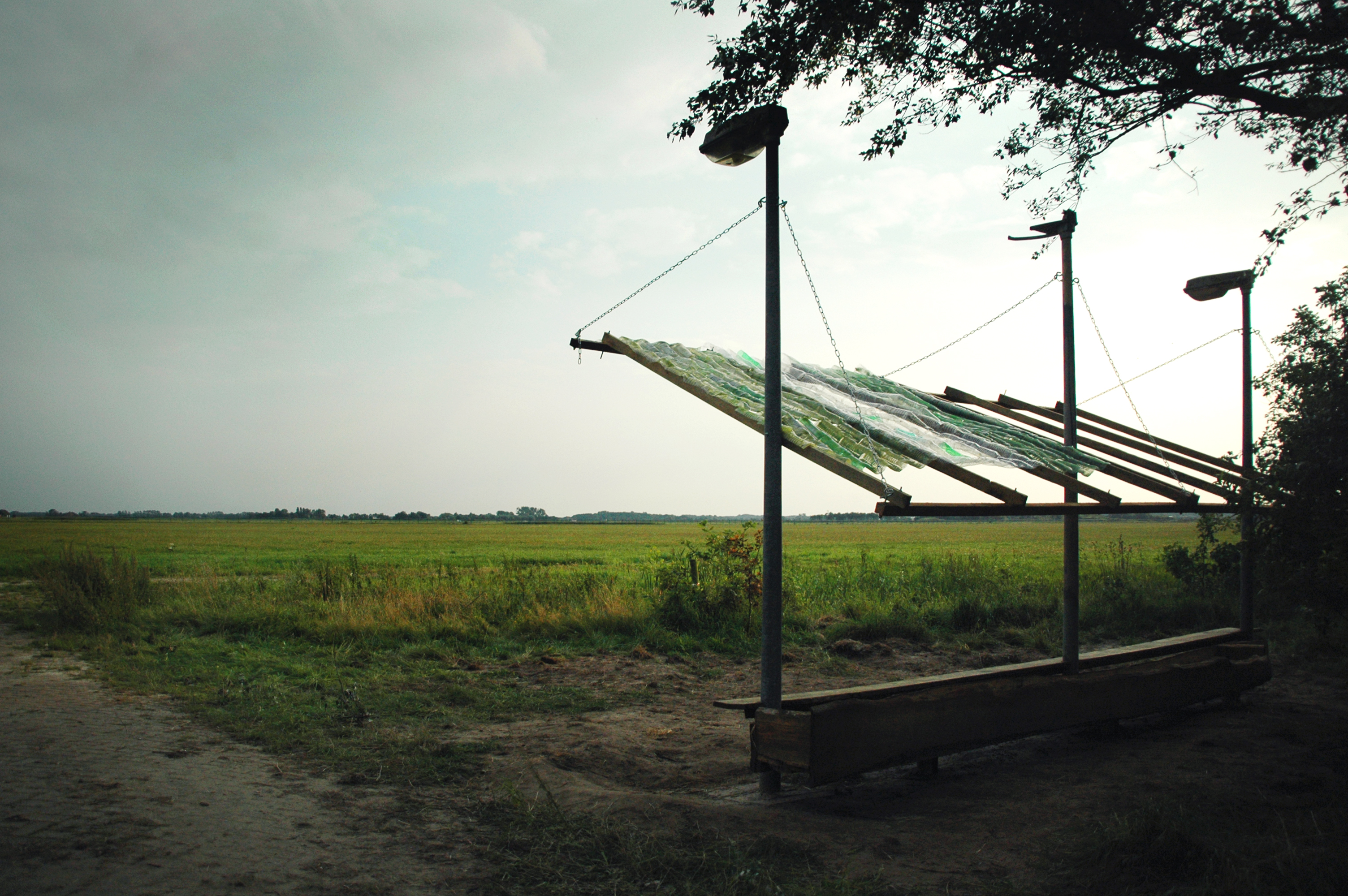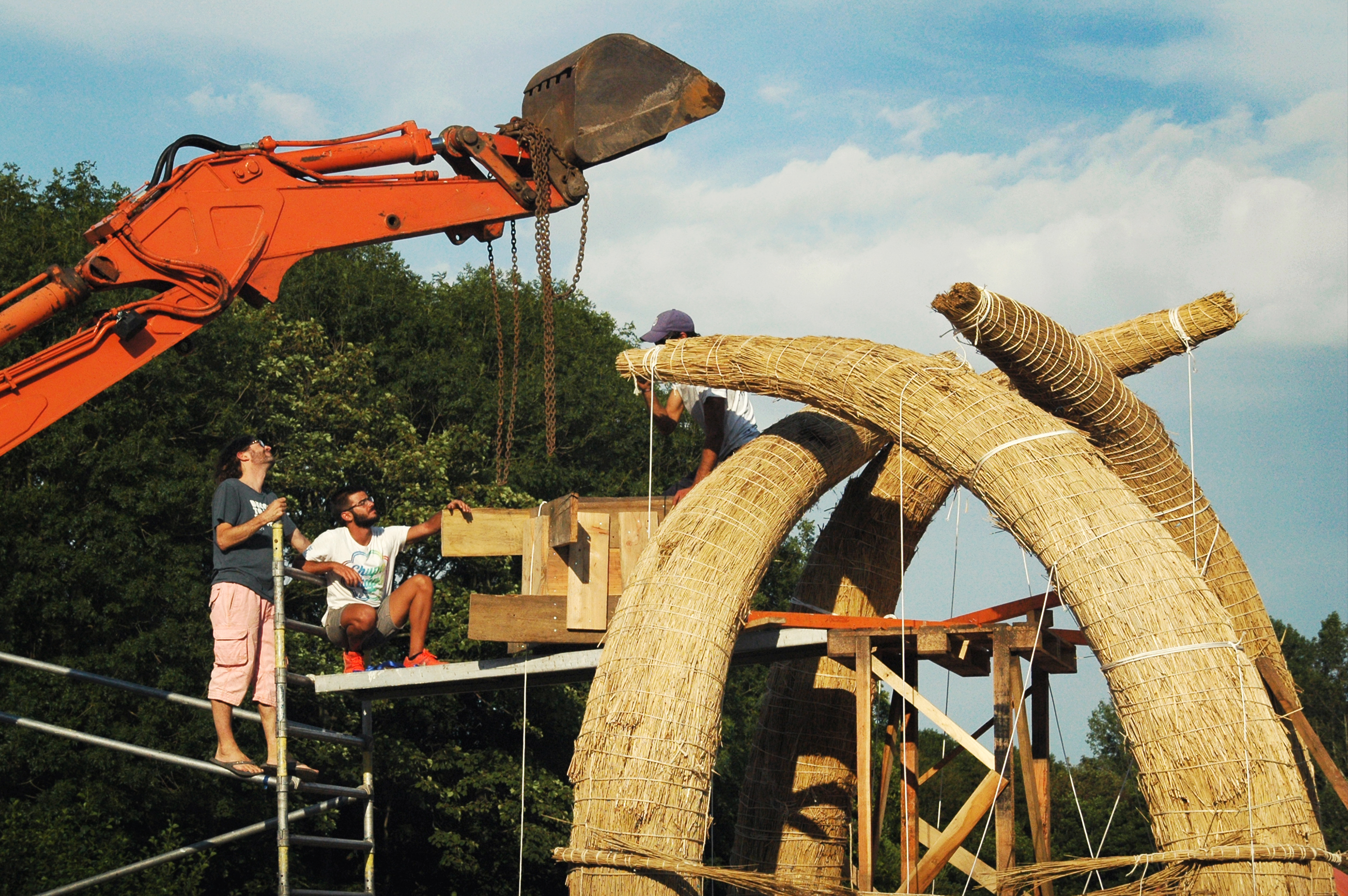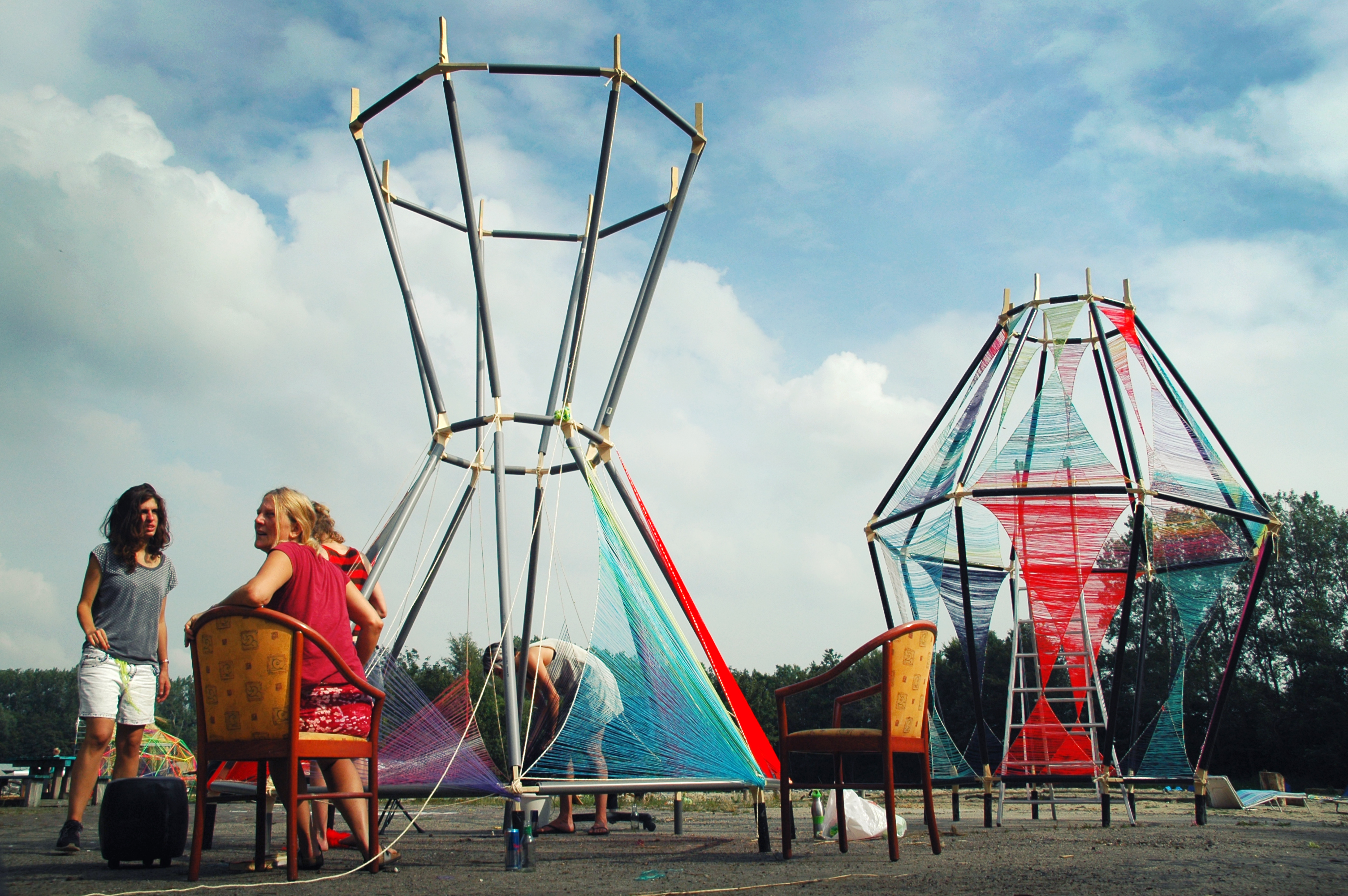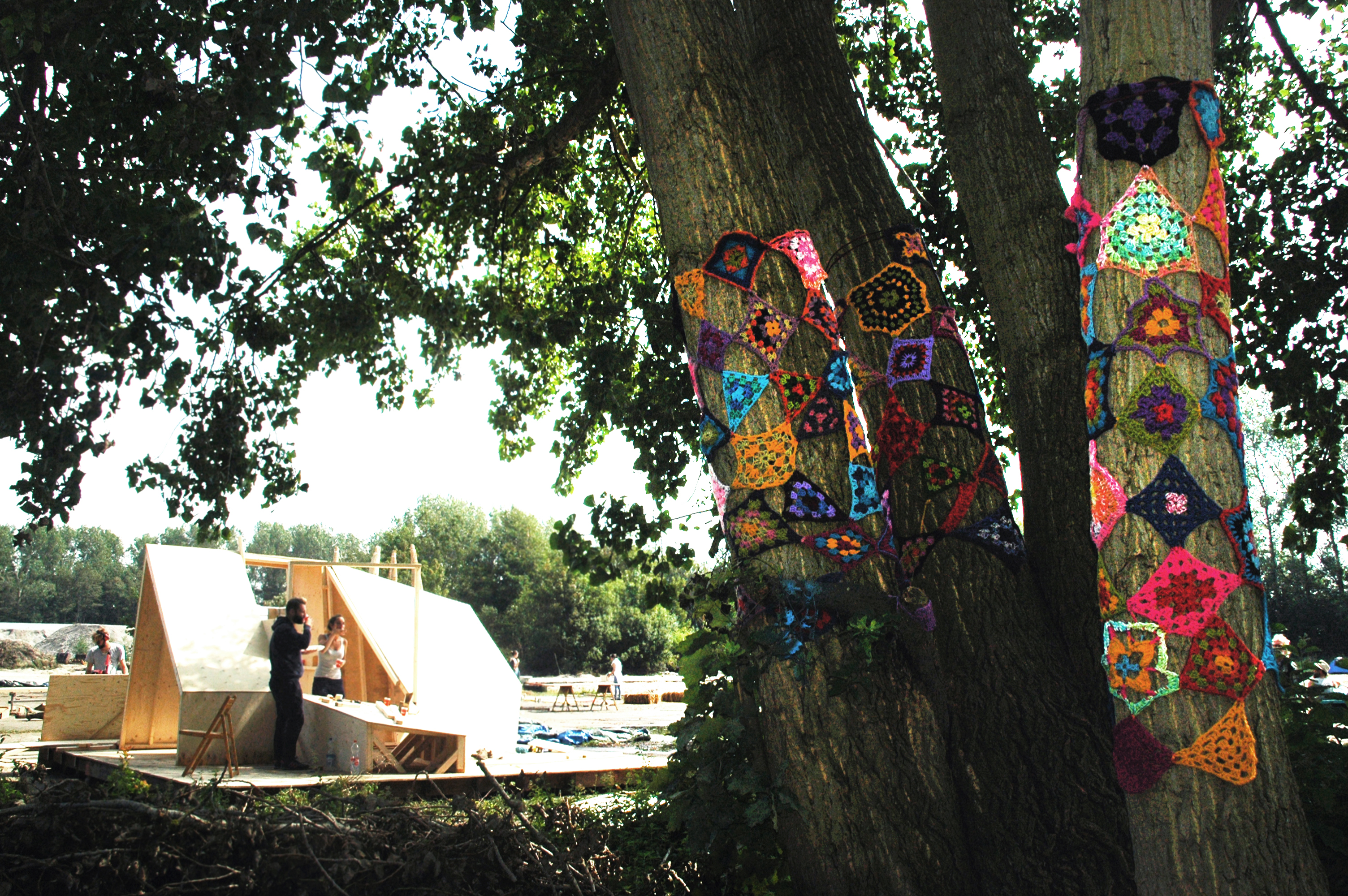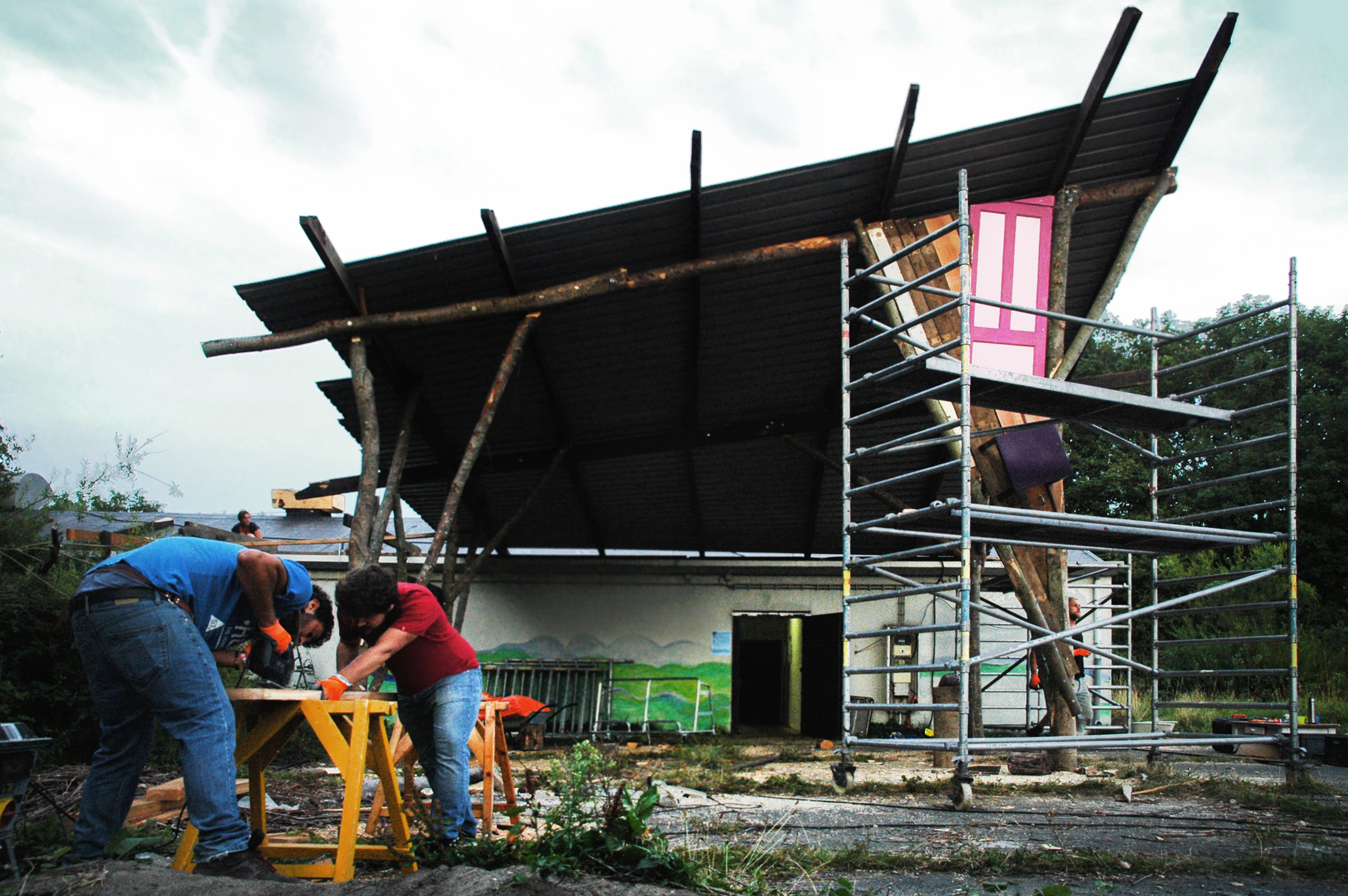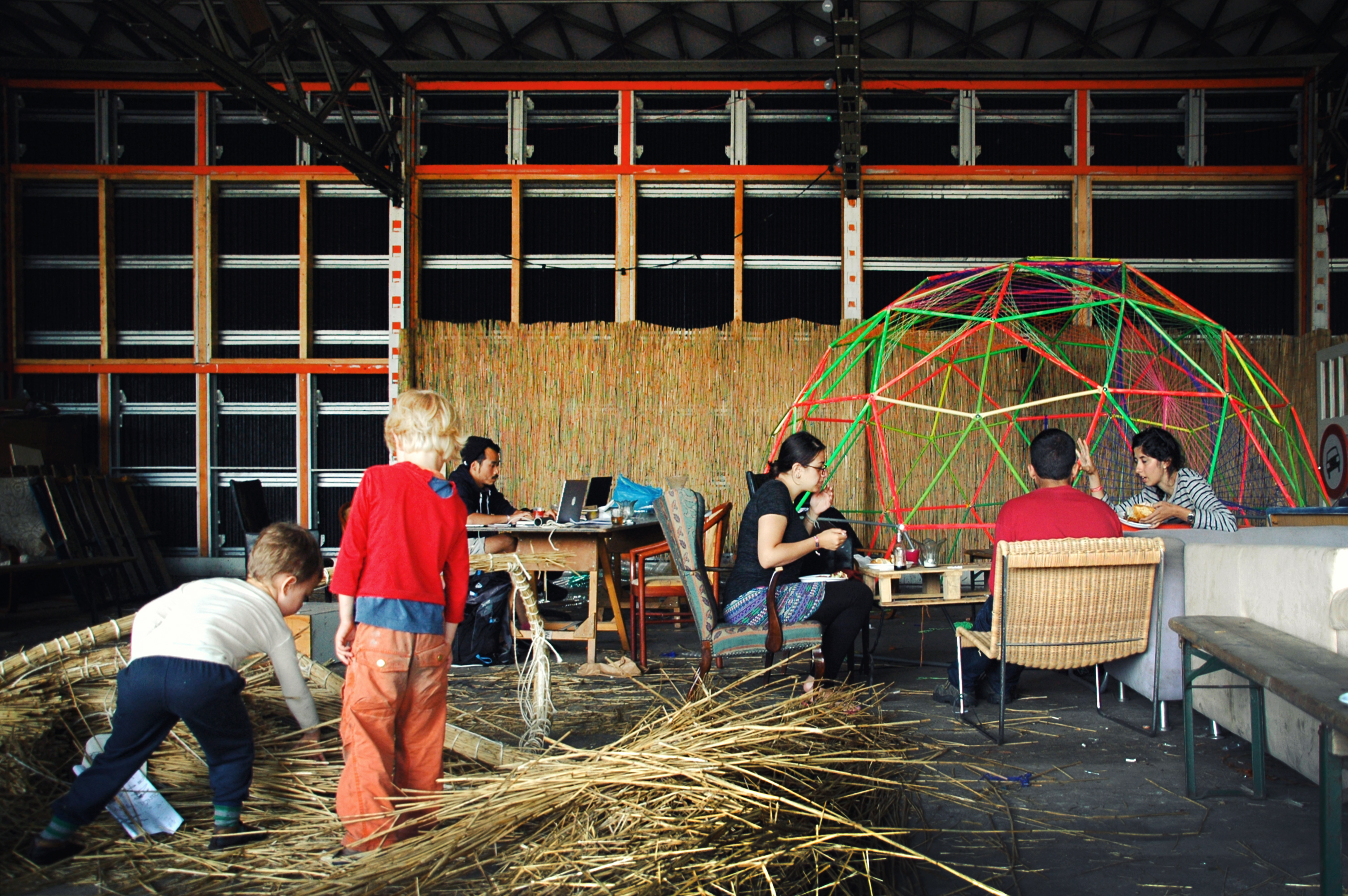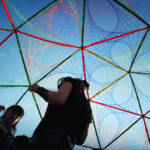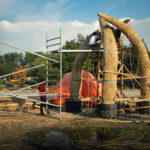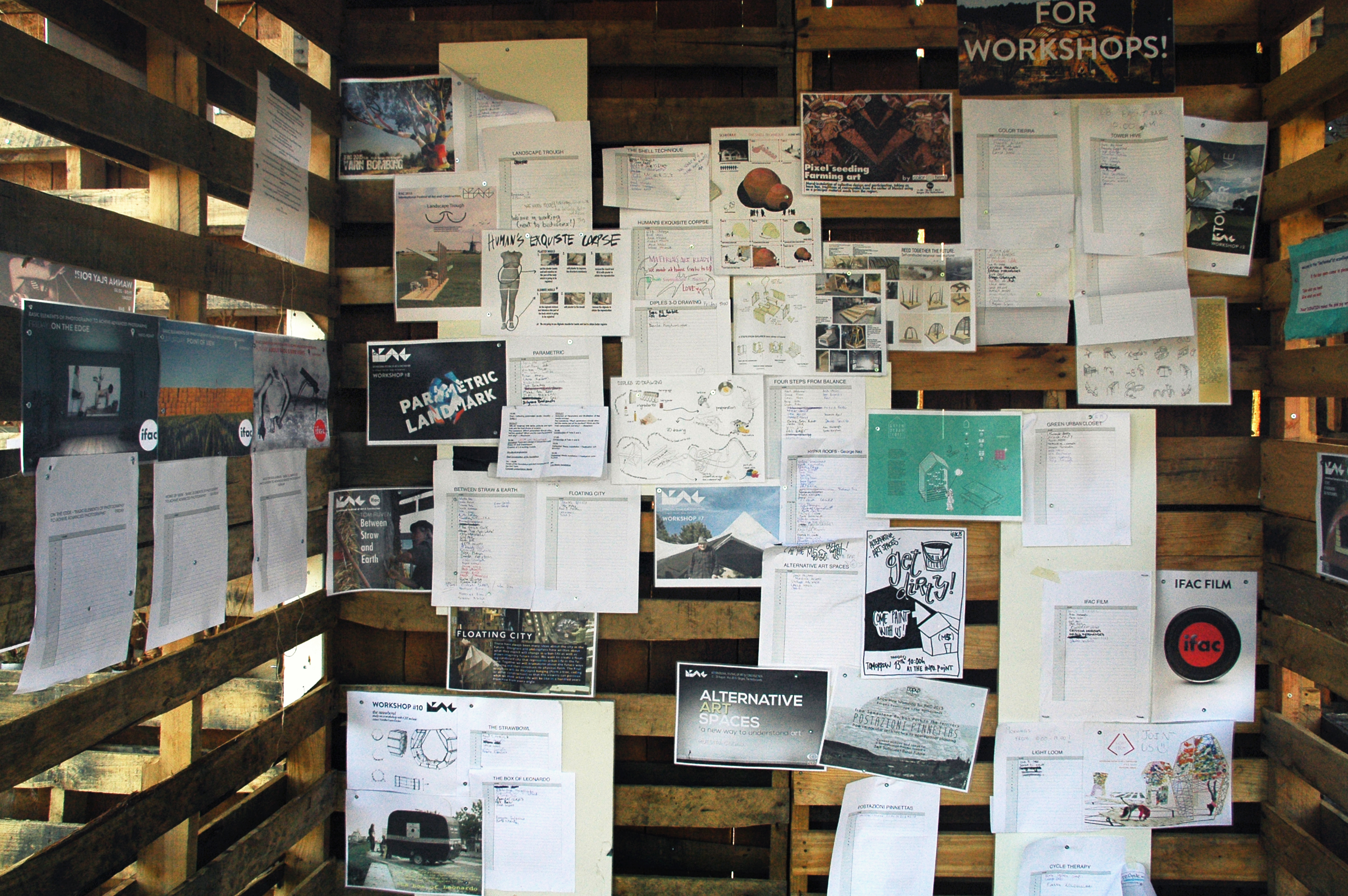
IFAC: a romance between art and architecture.
Sometimes you get to meet people who fill you with energy and electricity — fleeting, intense crossroads full of shared views and beautiful ideas. Spontaneous connections, which however tiny, will remain with you for a very long time.
Sometimes, these crossroads are not between people, but between arts, crafts, talents and experiences. Among these intersections is the inevitable attraction between art and architecture: explosive collages, a romance drunk with imagination. And, on very few occasions these two types of crossroads occur at the same time. And in those moments you can only hope that it will happen again.
It’s called IFAC, the International Festival of Art and Construction. It is a 10-day long celebration that brings together more than 300 people from all over the world – creatively restless individuals, who meet somewhere in the European countryside. I felt immeasurably lucky to be one of those 300 people, and so I wanted to share how fascinating IFAC is from the inside.
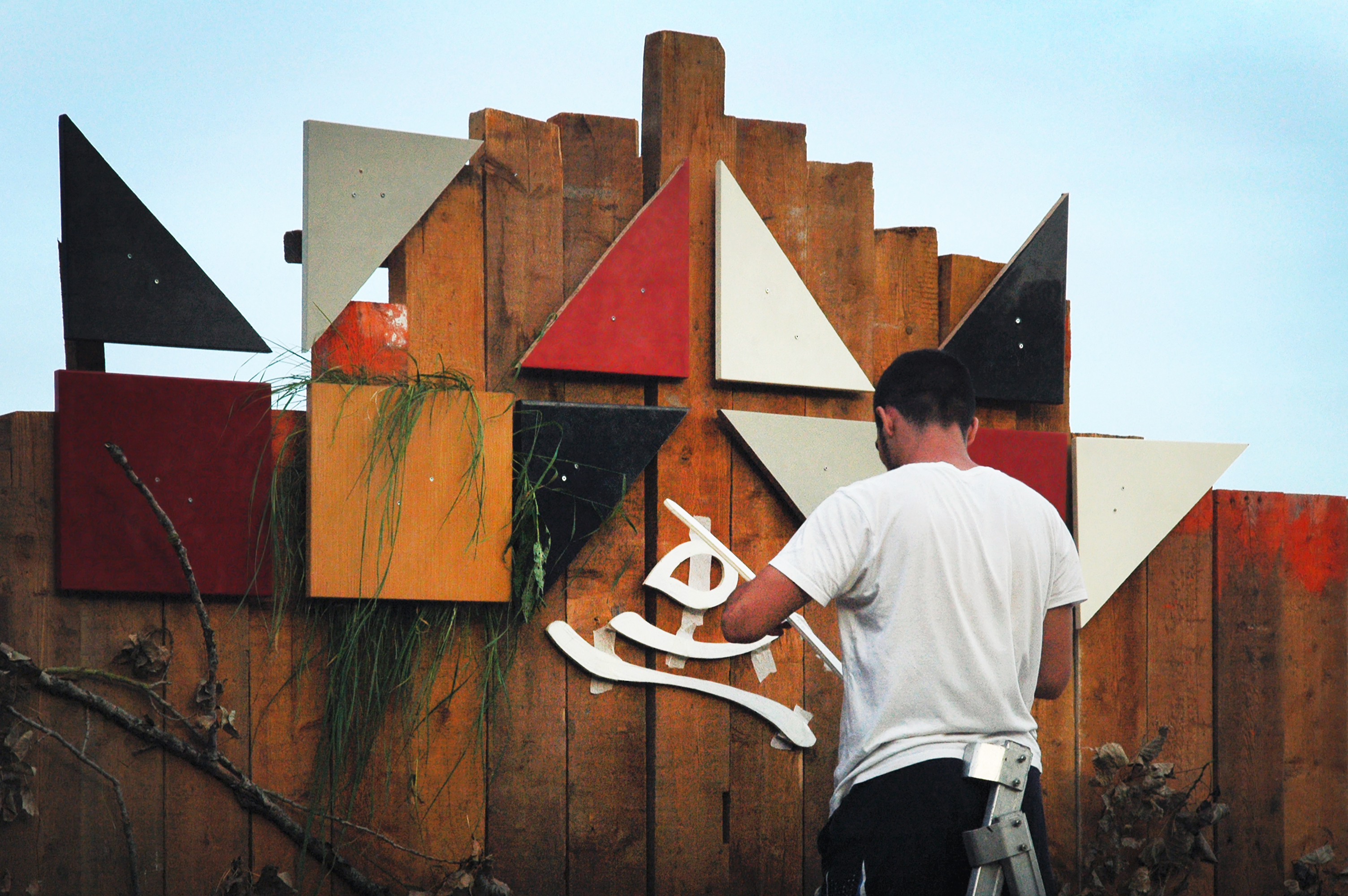
© Ana Asensio Rodríguez #IFAC2015
IFAC was started in Spain in 2012, as an initiative between Alejandro Cano, Jaime Martínez and Gonzalo Berrazueta, three architecture students from ETSAM who were concerned about the role of architecture schools in the education of future professionals and the role of architecture in creating “new worlds.”
IFAC is developing a genuine research network from a collective conscience of participation and mutual enrichment. This is with the aim of creating a place for debate and practice of arts and architecture, while overcoming the limitations of purely theoretical, limited academic training and sterile learning strategies.
However, talking about collectivism and participation in art and architecture is nothing new. In a way, this lack of originality draws a rich and attractive landscape for us. So, how are collective practices usually carried out? By working locally, regionally or even better, nationally: a multitude of collectives, associations and artists passing through different places where they carry out particular projects, while stimulating local participation. What happens when it’s the other way around? When instead of having an agent moving around to different places, all of these agents are gathered in one single place? This produces an explosion, a chemical reaction connecting one person to another.
The aim was to dedicate the space to a diverse range of young architects and artists, be they students or professionals. This horizontal strategy for creation and experimentation, free from academic baggage and intellectual pretense, intended to rethink strategies for a sustainable future.
And so it came to be: taking rural areas as a reference, they analyzed their role thus far, (typologies of popular architecture, balanced social relations, measured consumption and cultural coherence), while remaining conscious and keeping a clear view on contemporary and current technical possibilities.
“The debate concerning the meaning and significance of the rural context is held between two poles: on one hand, it’s a fictional place where the self-proclaimed urban society projects its past into a still life painting, a museum, a market niche. On the other hand, it’s regarded as a drawback, an obstacle in the conquest of modernity, a part of the “western idea of triumph”, which condemns the rural life in its intent on staying rural. This is the theoretical framework in which IFAC works and asks its questions,” according to the creators of the festival.
The goals and strategies driving the IFAC are whole, coherent, diverse and rich. They bring together the different agents and spheres of art and architecture (students, collectives, professionals, the local population) to question and research the contemporary role of the rural world, far from the traditional paternalistic view, and the role of art and architecture as positive agents of transformation, through workshops, exhibitions and talks.
Ok, that’s the theory. Everything sounds good but, what does it mean in practical terms?
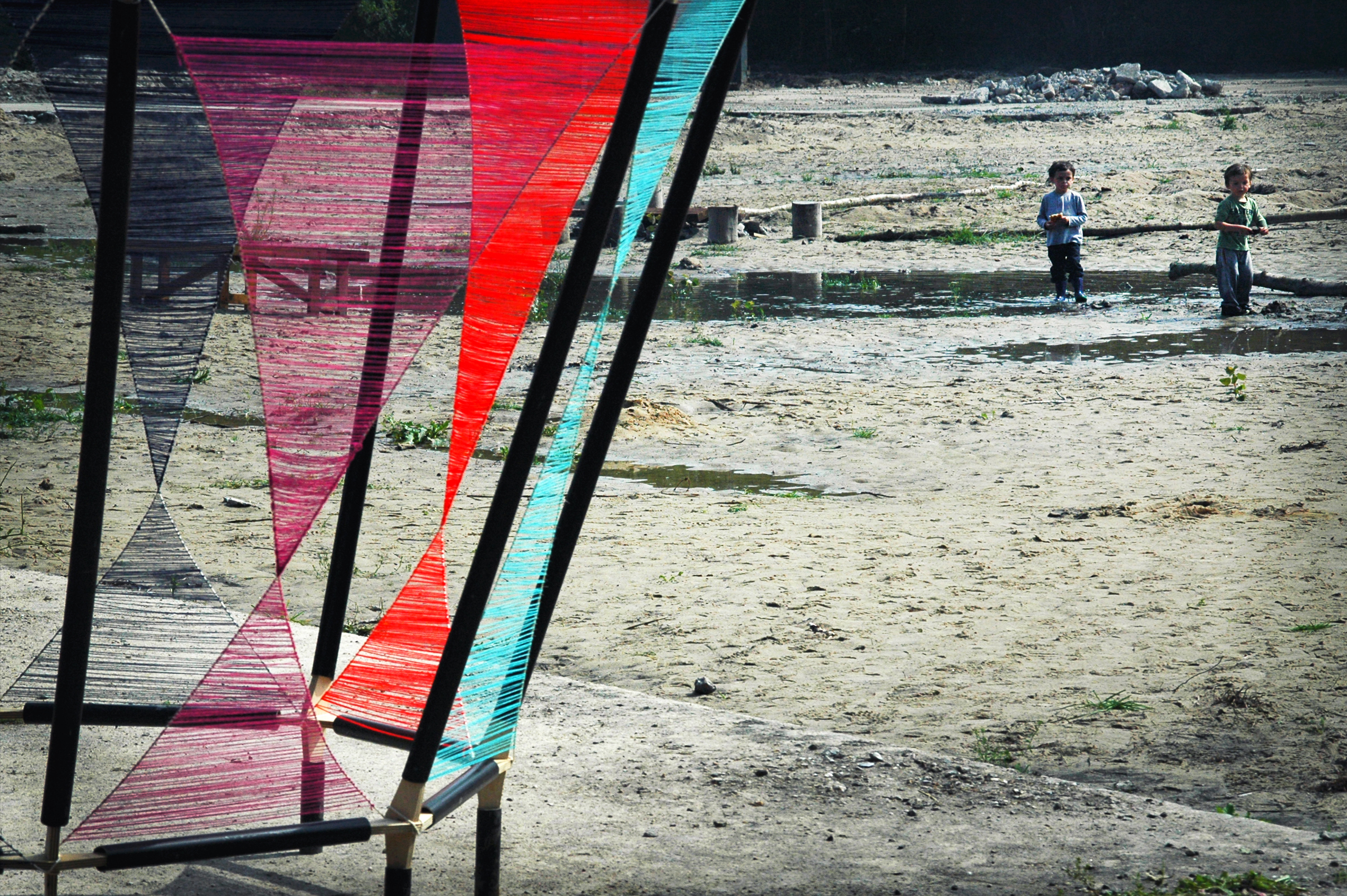
© Ana Asensio Rodríguez #IFAC2015
I’ve heard about the IFAC since its first year via social networks. For three years the festival’s host was the medieval town of Covarrubias (Burgos, Spain) with its less than 600 inhabitants. Even though I was close by, circumstances prevented me from attending and satisfying my curiosity, yet their program and strategy appealed strongly to me.
Marking the 4th edition of the IFAC, Spain passed the hosting torch on to the Netherlands. The new leading team, formed by Stijn Dries, Pim Boomgaard, Simme Bruinsma and Nanne Brouwer set the new meeting place in an ecovillage near Bergen, on the west coast (Ecodorp), where people can live with a net energy consumption of zero. An old airport, occupied by the German army during World War II, also occupies the site, and was a common place for plots and schemes with Russia during the Cold War. This is a vast territory, carved out by layers of history and architecture. Nowadays, this cherished land, against all odds has been inhabited by the people at Ecodorp and not by greedy speculators.
Year after year, the festival gained ground. I couldn’t postpone it any more; I had to experience it firsthand.
Months prior to the event was the ‘call for proposals’ period, to select the tutors of the 30 workshops that would take place over the course of the 10 day festival. Anyone with an idea was welcome to participate, free of any CV restrictions or recommendation letters. These workshops are the backbone of the festival, the core of every exchange taking place, and are organized in different categories:
– Constructive: researching the current possibilities of low-energy traditional techniques.
– Prototypes: either architectural, furniture or temporary interventions related to the sustainability of resources.
– Fine arts, theatrical or audiovisual arts: experimental workshops, interventions and performances, merging different artistic platforms within public spaces.
– Theoretical: dealing with a diversity of topics surrounding local identities and the role of the contemporary world in relation to the rural context.
© Ana Asensio Rodríguez #IFAC2015
So we sent them our project. When it was selected, we could start preparing for our trip to the north, and our experimental prototype. Despite being well aware of the horizontal philosophy of this event, it was still hard for us to think outside of academic processes, structures and hierarchies.
We thoroughly calculated every material, cost and timing that was required, how to adapt the project to its geographical context, how many participants the workshop could take, how to divide the different sections proportionally etc, while remaining in constant communication with the organizers. To a certain degree, however, we were still subjecting ourselves to the traditional division of organization/tutor/participant, with pressure to meet our expectations and furthermore, with an absolute lack of connection to the place and the feelings it could inspire in us. We had planned it from beginning to end even before we were there to execute it.
It was only natural that such structure collapsed under its own weight as soon as we arrived. Because after the emails and posters, you meet the people and the place. And prototypes have to respect the context in which they will be brought to life. Materials need to adapt to available resources, as much as the design must adapt to the participants.
The place and its people are an indissoluble element. The first acts as a complex historical account assimilated by the second, in the same manner that deep eyes reflect a myriad of experiences without speaking a word. The town, the ecovillage, the bunkers dating back to the war and the airport’s hangars are all different layers. The transformation of the place itself and the transformation of the participants are palpable. That’s when your perception changes completely. Then you understand that no construction has any meaning without its assimilation, nor does a process without incorporating the people. If every affair starts with an interest towards another, it follows unequivocally with an instantaneous connection.
Of course, all that was plainly clear to IFAC. They encourage and provoke the participants through a playful environment, catalyzing action and reflection through joy, enthusiasm and fun. Because no learning is possible without an emotional connection towards it. That’s when you understand why it’s a festival and not a congress, why it’s a celebration and not a symposium, why the complement to the workshops is a party and not a round table.
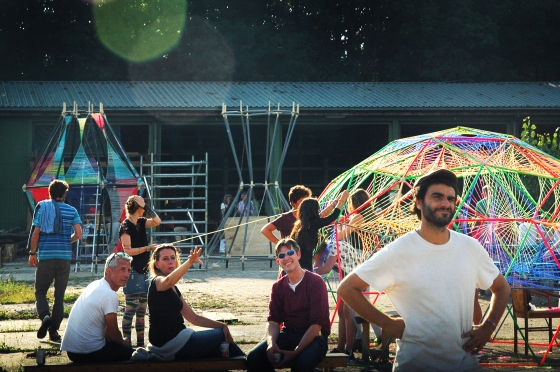
© Ana Asensio Rodríguez #IFAC2015
“Among the different possibilities, we opted for a festival because we weren’t interested in the borders that define pedagogy, theory and practice or a party atmosphere […] Our intention was to integrate all these different elements within a holistic view, rather than strengthening such barriers.” [Interview in Mimbrea]
Every activity is open to participation at all times, from design to execution, and participants change their roles constantly; shattering restrictions and impositions. Suddenly, projects and people are merged, they hybridize. Materials are improvised, typologies are thought over and questioned, and thus the original project is revised in ways that weren’t envisioned before. Such constructions are spontaneous, born from many different minds and hands. Passion, chemistry, interaction, energy and illusion. Quite an adventure.
It’s interesting that an effervescent festival, one that gathers people from all around the world, manages to create such a close, familiar environment. These relations, grown within a somewhat isolated place, create a deep intimacy. Despite there being hundreds of participants, no activity is depersonalized in order to reach the masses. Familiarity is one of the intrinsic idiosyncrasies of the meeting itself, the soil for the development of every activity, which is clearly tangible in the processes and their given results.
Like the different members of a family, tutors, participants and organizers each have their own role, none of which is more important than the others. In fact, the festival is mostly financed that way. Every contribution from each of the participants (festival tickets, food, beverages, merchandising, e.t.c) acts as crowdfunding, like a microcredits system for them, immediately re-invested in materials, tools, energy supplies or any other thing necessary for the projects. Even the different areas – stages, campsites, bars, clubs and other recreational areas — used during the festival are previously built with the help of any willing participant.
Every family has its own economy and division of labour, its own structure subjected to experimentation and improvisation in order to survive, to develop and learn. A structure that assimilates to their emotions as it perpetuates itself. IFAC is only possible when each individual adopts a role which feeds into every other role, creating synergy.
To sum everything up, IFAC is not an International Festival of Art and Constructionthat seeks a final piece of work, a result to be shown as a photoshopped, lifeless picture.IFAC is about processes. In their denial of an education based on rewarding right answers and high grades, they create an intense social, emotional and efficient didactic system. In the end, IFAC is only one thing, despite being divided into actions (#LearnBuildParticipate) and despite their slogan: “10 days, 30 workshops, 300 participants.”
- © Ana Asensio Rodríguez #IFAC2015
- © Ana Asensio Rodríguez #IFAC2015
- © Ana Asensio Rodríguez #IFAC2015
At the end, there is an unstoppable wave of brilliant ideas, projects and dreams that will remain with you day after day. Now all we can do is wait for next year’s festival, while we try to overcome this Stendhal syndrome, a disorder that affects sensitive individuals when briefly exposed to an overdose of artistic beauty. But this particular post-IFAC Stendhal syndrome was not triggered by the beauty of any final work, but by all the elements and all the people that made it possible.
Text and photography: Ana Asensio Rodríguez / Translated by Jacinto Castillo & Elyse Lake / Originally written for Plataforma Arquitectura / Links of Interest: Web / Facebook / A big thanks to Stijn Dries, Pim Boomgaard, Simme Bruinsma and Nanne Brouwer, for giving us the chance to make this experience a part of our lives / Article originally written in Spanish for ArchDaily en Español: Ana Asensio Rodríguez shares (now in Archdaily International) her experience at the 2015 edition of IFAC, reflecting on the powerful intersection of art and architecture, and the collective nature of the event

